Nof S.Y. Springer Handbook of Automation
Подождите немного. Документ загружается.

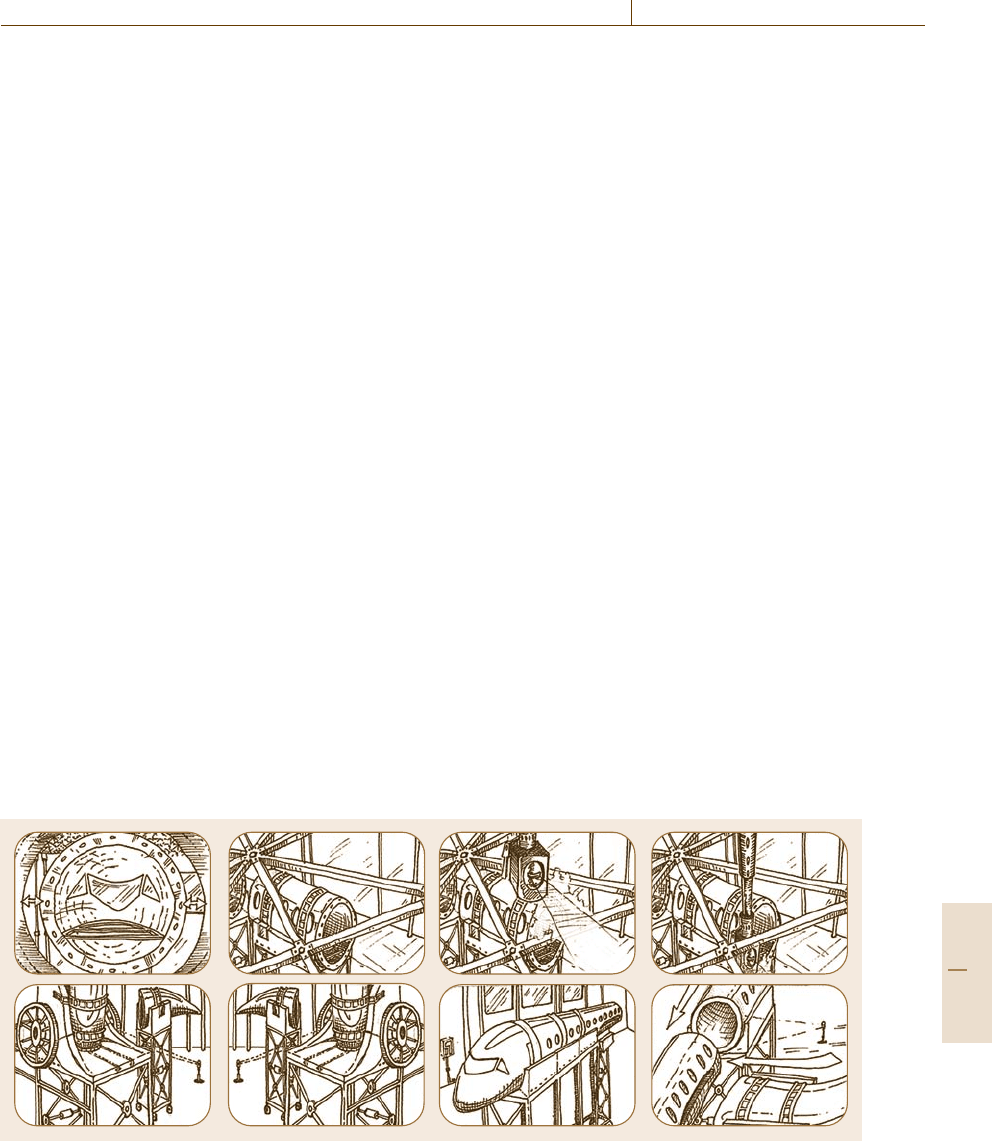
Computer-Aided Design, Computer-Aided Engineering, and Visualization 37.6 3-D Animation Production Process 645
37.6 3-D Animation Production Process
Computer animations and simulations are commonly
used in the engineering design process to visualize
movement of parts, determine possible interferences of
parts, and to simulate design analysis attributes such
as fluid and thermal dynamics. The 3-D model files of
most CAD systems can be converted into a format that
can be used as input into popular animation software
programs, such as Maya and 3ds Max. Once the files
have been input into the animation software program,
the animation process can begin. The animation process
can be quite complex, depending on the level of realism
necessary for the design visualization. This section will
describe the steps necessary to create design animations
from CAD models.
The 3-D animation production process can be di-
vided into three main phases:
•
Concept development and preproduction
(Sect.37.6.1)
•
Production (Sect.37.6.2)
•
Postproduction and delivery (Sect.37.6.3).
37.6.1 Concept Development
and Preproduction
Several key activities take place during this phase,
including story development and visual design, pro-
duction planning, storyboarding, soundtrack recording,
animation timing, and production of the animatic.
Every animation tells a story, “...you need not to
have characters to have a story ...”[37.9]; for example
Fig. 37.5 An example of preliminary storyboard illustrating the futuristic assembly process of a Boeing 787 (courtesy of
Purdue University, with permission from N. Adamo-Villani, C. Miller)
an architectural walkthrough or a medical visualization
has a story in the sense that the events progress in a log-
ical and effectively developed way. Story development
begins with a premise – an idea in written form [37.10].
When the premise is approved, it is expanded into an
outline or treatment – a scene-by-scene description of
the animation – and the treatment is fleshed out into
afullscript. Visual design is carried out concurrently
to story development. It is during this conceptual stage
that the visual style of the animation is defined, charac-
ter/object/environment design is finalized and approved
for production, and the story idea is translated into a vi-
sual representation – the storyboard.
A storyboard is a sequence of images – panels –
and textual descriptions describing the story, design, ac-
tion, pacing, sound track, effects, camera angles/moves,
and editing of the animation. Figure 37.5 shows an ex-
ample of a preliminary storyboard. Animation timing
is the process of pacing the action on the storyboard
panels in order to tell the story in a clear and effec-
tive manner. The most common method of timing is
the creation of a story reel or animatic. The creation
of the animatic [37.11]: “... is essentially the process
of combining the sound track with the storyboard to
pace out the sequence”. In addition to scanned-in sto-
ryboard panels with digitized soundtrack, the animatic
can include simulated camera moves and rough mo-
tion of characters and objects. The main purpose of
the animatic is to show the flow of the story by block-
ing the timing of the individual shots and defining the
transitions between them. It provides an opportunity to
Part D 37.6
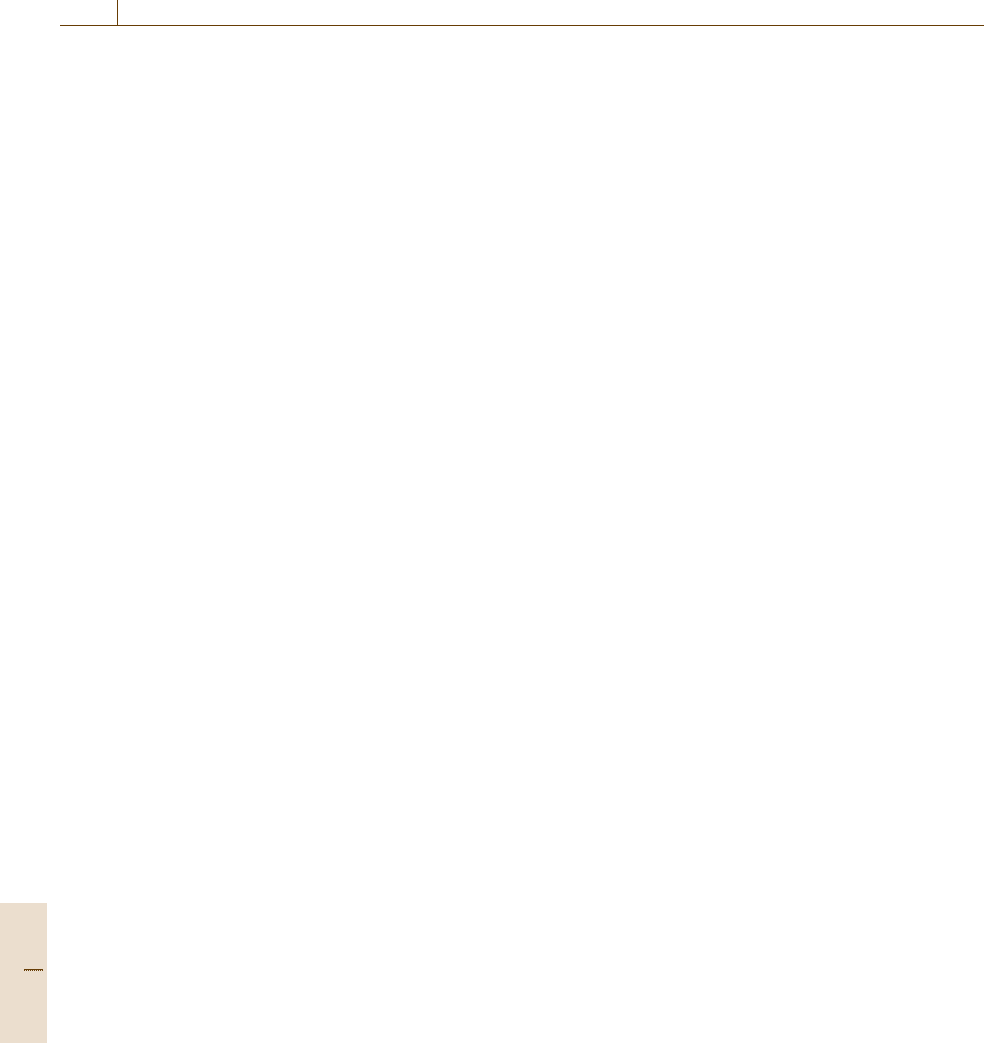
646 Part D Automation Design: Theory and Methods for Integration
experiment with different cinematic solutions and to
visualize whether the final animation makes sense as
a filmic narrative.
37.6.2 Production
The production phase includes the following activities:
3-D modeling, texturing, rigging, animation, camera
setup, lighting, and rendering.
Modeling
“Modeling is the spatial description and placement
of objects, characters, environments and scenes with
a computer system” [37.12]. In general, 3-D models for
animation are produced using one of four approaches:
surface modeling, particle-systemmodeling, procedural
modeling or digitizing techniques.
In surface modeling surfaces are created using
spline, polygon or subdivision surfaces modeling meth-
ods. A spline model consists of one or several patches,
i.e., surfaces generated from two spline curves. Dif-
ferent splines generate different types of patches; the
majority of spline models used in 3-D animation con-
sist ofnonuniform rational B-splines (NURBS) patches,
which are generated from NURBS curves. A polygonal
model consists of flat polygons, i. e., multisided objects
composed of edges, vertices,andfaces;asubdivision
surface results from repeatedly refining a polygonal
mesh to create a progressively finer mesh. Each sub-
division step refines a submesh into a supermesh by
inserting more vertices. In this way several levels of de-
tail are created, allowing highly detailed modeling in
isolated areas.
Common techniques used to create surface models
include: lathe, extrude,loft,andBoolean operations;for
instance, a polygonal mesh or a NURBS surface can
be created by drawing a curve in space and rotating it
around an axis (lathe or revolve); or by drawing a curve
and pushing it straight back in space (extrude); or by
connecting a series of contour curves (loft). Boolean
operators allow for combination of surfaces in vari-
ous ways to produce a single piece of geometry. Three
Boolean operations are commonly used in 3-D model-
ing for animation: addition or union, subtraction,and
intersection. The addition operation combines two sur-
faces into a single, unified surface; the subtraction
operation takes away from one object the space occu-
pied by another object, and the intersection operation
produces an object consisting of only those parts shared
by two objects, for instance, overlapping parts.
Particle-system modeling is an approach used to
represent phenomena as fire, snow, clouds, smoke, etc.
which do not have a stable and well-defined shape.
Such phenomena would be very difficult to model with
surface or solid modeling techniques because they are
composed of large amounts of molecule-sized particles
rather than discerniblesurfaces. In particle-systemmod-
eling, the animator creates a system of particles, i. e.,
graphical primitives such as points or lines, and de-
fines the particles’ physical attributes. These attributes
control how the particles move, how they interact with
the environment, and how they are rendered. Dynam-
ics fields can also be used to control the particles’
motion.
Procedural modeling includes a number of tech-
niques to create 3-D models from sets of rules.
L-systems, fractals,andgenerative modeling are exam-
ples ofprocedural modelingtechniques sincethey apply
algorithms for producing scenes; for instance, a terrain
model can be produced byplotting anequation of fractal
mathematics that recursively subdivides and displaces
a patch.
When a physical model of an object already exists,
it is possible to create a corresponding 3-D model using
various digitizing methods. Examples of digitizing tools
include 3-D digitizing pens and laser contour scanners.
Each time the tip of a 3-D pen touches the surface of the
object to be digitized, the locationof a point isrecorded.
In this way it is possible to compile a list of 3-D co-
ordinates that represent key points on the surface. The
3-D modeling software uses these points to build the
corresponding digital mesh, which is often a polygonal
surface. In laser contour scanning the physical object is
placed on a turntable, a laser beam is projected onto its
surface, and the distance the beam travels to the object
is recorded. After each 360
◦
rotation a contour curve
is produced and the beam is lowered a bit. When all
contour curves have been generated, the 3-D software
builds a lofted surface.
Surface models can be saved to a variety of for-
mats. Some file formats are exclusive to specific
software packages (proprietary formats), while oth-
ers are portable, which means they can be exchanged
among different programs. The two most common
portable formats are “.obj” (short for object) introduced
by Alias for high-end computer animation and visual
effects productions, and the drawing interchange for-
mat (DXF) developed by Autodesk and widely used
to exchange models between CAD and 3-D animation
programs.
Part D 37.6

Computer-Aided Design, Computer-Aided Engineering, and Visualization 37.6 3-D Animation Production Process 647
Texturing
Texturing is the process of defining certain characteris-
tics of a3-D surface suchas color, shininess,reflectivity,
transparency, incandescence, translucence, and smooth-
ness. Frequently, these characteristics or parameters are
treated as a single set called a shader or a computer
graphics (CG) material.Ashader parameter can be as-
signed a single value (for, example the color parameter
can be assigned an RGB value of 255,0,0; in this case
the entire surface is red), or the value can vary across
the surface. Two-dimensional (2-D) texture mapping is
a method of varying the texture parameter values across
the surface using 2-D images. For example a 2-D pic-
ture can be applied to a 3-D surface to produce a certain
color or transparency pattern. The 2-D picture can be
a digital photo, a scanned image, an image produced
with a 2-D paint program, or it can be generated pro-
cedurally. In general, the application of the 2-D image
to the 3-D surface can be implemented in two ways:
by projecting the image onto the surface (projection
mapping) or by stretching it across the surface (pa-
rameterized mapping). In certain situations 2-D texture
mapping does not produce realistic texture effects; for
instance, a virtual block of marble rendered using 2-D
texture techniques will appear to be wrapped in marble-
patterned paper, rather than made of marble. To solve
this problem it is possible to use another technique
called solid texture mapping. The idea behind this tech-
nique is that you create a virtual volume of texture and
you immerse your object in that volume [37.9]. Many
3-D software packages allow for creation of procedural
3-D textures. Figure 37.6 shows a rendering produced
using a variety of texturing techniques.
Fig. 37.6 A 3-D image produced using a variety of texture
maps: color, transparency, bump, reflection, and translu-
cence (courtesy of Purdue University, with permission
from N. Adamo-Villani)
Rigging
Rigging is the process of setting up a 3-D object or
character for animation. Common rigging techniques
include: forward kinematics (FK)andinverse kinemat-
ics (IK), hierarchical models, skeletal systems, limits,
and constraints. When the 3-D object/character to be
animated is made of multiple segments, the segments
(or nodes) can be organized in an FK hierarchical
model.InanFK hierarchy a node just below another
node is called a child, while the node just above is
called a parent, and the flow of transformations goes
from parent to child. In order to animate an FK hi-
erarchical model, each node needs to be selected and
transformed individually to attain a certain pose. This
process can become complicated and tedious when the
model is very elaborate; for example, imagine a situ-
ation in which the animator needs to place the hand
of a 3-D human-like character on a particular object.
With an FK model, the animator has to first rotate
the shoulder, then the lower arm, then the wrist, hand
and fingers, working from the top of the hierarchy
down. He cannot select the hand and place it on the
object because the other parts of the arm will not fol-
low, as they are parents of the hand. This problem can
be solved by creating an inverse kinematics model in
which the transformations travel upward through the
hierarchy, for instance, from the hand to the shoul-
der. In this case the animator can place the hand on
the object and have the other segments (lower arm
and upper arm) follow the motion. An IK model is
also called an IK chain and each node is referred to
as a link. The first link of the chain is called the
root of the chain and the end point of the last link
is called the effector (as it affects the positions of all
the other links, i. e., it effects the IK solution). In prin-
ciple, each link in a chain can rotate any number of
degrees around any axis. While these unrestricted ro-
tations may be appropriate in certain situations, they
are not likely to produce realistic results when the IK
system is applied, for instance, to a human or ani-
mal model. This is due to the fact that human and
animal joints have rotational limits; for example, the
knee joint cannot bend beyond ≈180
◦
. To solve this
problem it is common to set up limits and constraints.
Limits can be defined for any of a model’s three ba-
sic transformations (translation, rotation and scale); in
addition, the transformations can be constrained (i.e.,
associated) to the transformations of other objects. Po-
sition or point, rotation or orient,anddirection or
aim are common types of constraints used in 3-D ani-
mation.
Part D 37.6
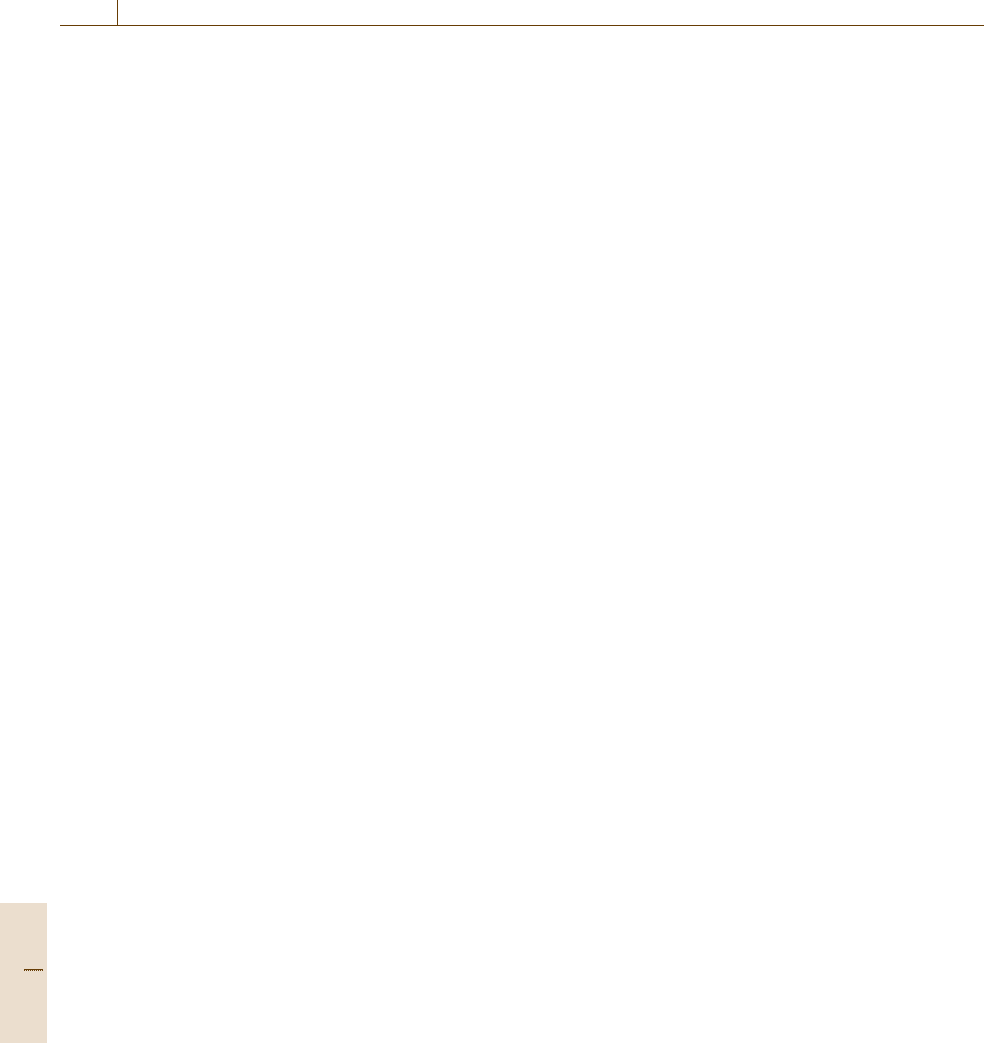
648 Part D Automation Design: Theory and Methods for Integration
Many 3-D animation packages allow for creation of
both FK and IK models. In general, to rig complex char-
acters or objects the animator creates a skeletal system,
i.e., a hierarchical model composed of joints connected
by bones. The segments that make up the 3-D char-
acter/object are parented to the joints of the skeleton
and the skeleton can function as an FK or IK model,
with the possibility to switch between the two modes
of operation during the animation process. If the 3-D
object/character is supposed to deform during motion,
the 3-D geometry can be attached (or skinned)tothe
skeletal joints; in this case the skeleton functions as
a deformation system.
Animation
Common 3-D animation techniques include: keyframe,
motion path, physically-based,andmotion capture ani-
mation.Inkeyframe animation, the animator sets key
values to various objects’ parameters and saves these
values at particular points in the timeframe; this pro-
cess is called setting keyframes. After the animator
has defined the keyframes, the 3-D software interpo-
lates the values of the object’s parameters between the
keyframes. To gain more control of the interpolation,
a parameter curve editor is available in the major-
ity of 3-D animation packages. The parameter curve
editor shows a graphical representation of the varia-
tion of a parameter’s value over time (the animation
curve. The animation curves are Bézier curves whose
control points are the actual keyframes. Two tangent
handles (vectors) are available at each control point (or
keyframe) and allow the animator to manipulate the
shape of the curve and thus the interpolation.
Motion path animation is used when the object to
be animated needs to follow a well-defined path (for in-
stance, a train moving along the tracks). In this case the
animator draws the path, attaches the object to the path,
and defines the number of frames required to reach the
end of the path. In addition, the animator has the abil-
ity to control the rate of motion along the path, and the
orientation of the object. The main advantage of motion
path over keyframe animation is that, if the path is mod-
ified, the animation of the object that follows it updates
to the path’s changes.
Physically based animation is based on dynamics
methods and is used to generate physically accurate
simulations. Several steps are required to set up a dy-
namic simulation including definition of the objects’
physical attributes (i.e., mass, initial velocity, elastic-
ity, etc.); modeling of dynamic forces acting upon the
objects; and definition of collisions. A dynamic simu-
lation can be baked before the animation is rendered;
baking is the process of generating an animation curve
for each parameter of an object whose change over time
is caused by the dynamic simulation.
Motion capture animation, also referred to as per-
formance animation or digital puppetry [37.13]:
... involves measuring an actor’s (or object) posi-
tion andorientation in physicalspace andrecording
that information in a computer-usable form.
In general the position or orientation of the actor is
measured bya collectionof inputdevices (optical mark-
ers or sensors) attached to the actor’s body. Each input
device has three degrees of freedom (DOF) and pro-
duces 3-D rotational or translational data which are
channeled to the joints of a virtual character. As the ac-
tor moves, the input devices send data to the computer
model. These data are used to control the movements
of the character in real time, and to generate the ani-
mation curves. Motion capture animation is often used
when the animation of the 3-D character needs to match
the performance of the actor very precisely.
Camera Setup
The point of view from which a scene is observed is
defined by the CG camera. The point of view is deter-
mined by two components or nodes: the location of the
camera and the camera center of interest. The location
is a point in space, while the center of interest can be
specified as a location in space (i. e., a triplet of XYZ
coordinate values) or as camera direction (i. e., a triplet
of XYZ rotational values). In addition to location and
center of interest, important attributes of a CG camera
include the zoom parameter [whose value determines
the width of the field of view (FOV) angle], depth of
field,andnear and far clipping planes,usedtoclip the
viewable (and therefore renderable) 3-D space in the Z
direction.
Lighting
The process of lighting a CG scene involves selecting
the types of light to be used, defining their attributes,
and placing them in the virtual environment. Common
types of light used in CG lighting include ambient
lights, spotlights, point lights,anddirectional lights.
An ambient light simulates the widely distributed, indi-
rect light that has bounced off objects in the 3-D scene
and provides a uniform level of illumination; a point
light emanates light in all directions from a specific
location in space (simulating a light bulb); a spotlight
is defined by location and direction and emits light in
Part D 37.6
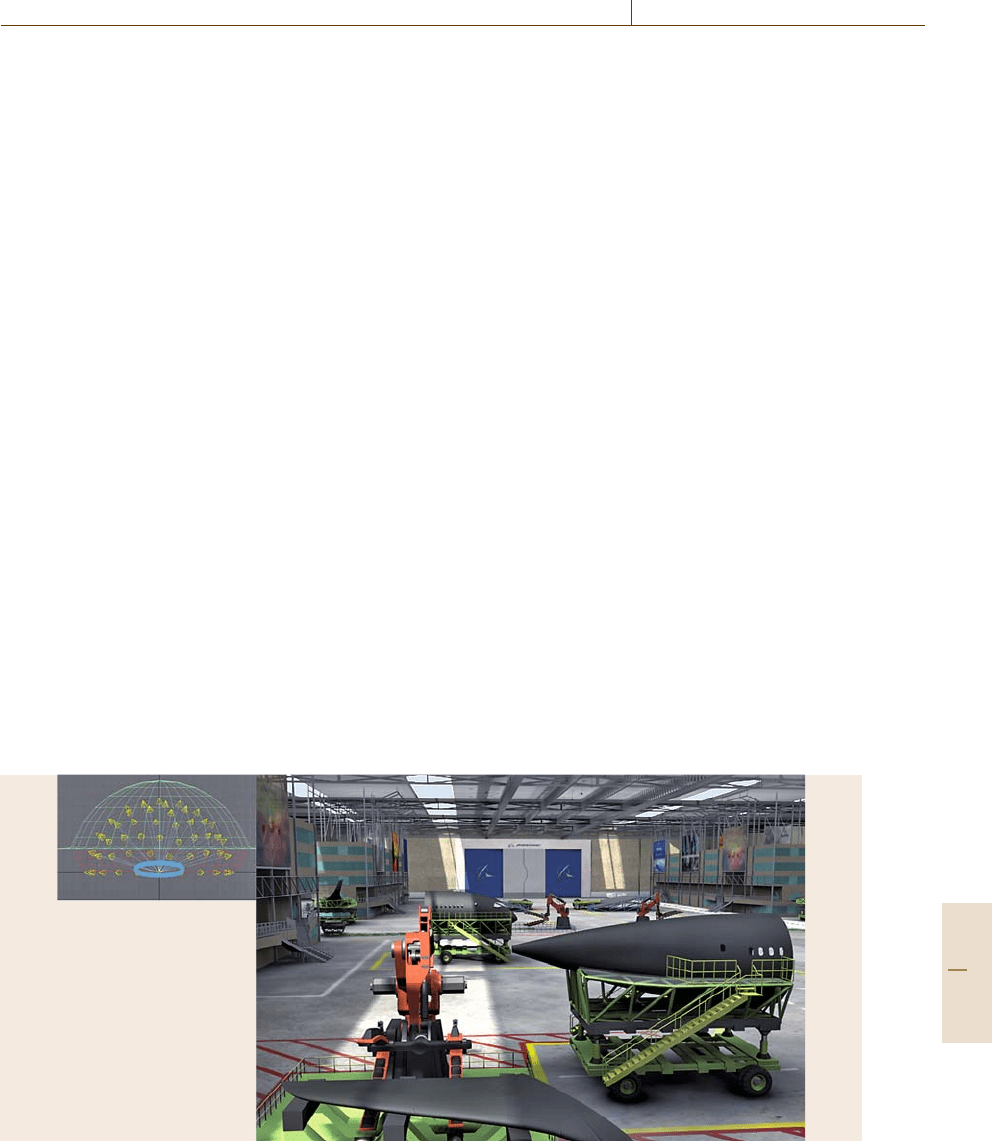
Computer-Aided Design, Computer-Aided Engineering, and Visualization 37.6 3-D Animation Production Process 649
a cone-shaped beam of variable width; and a directional
light (orinfinite light) is assumed tobe located infinitely
far away and simulates the light coming from the sun.
Common parameters of CG lights are: intensity, color,
falloff (i.e., decrease of intensity with distance from
the light source), and shadow characteristics such as
shadow color, resolution, and density. In general, CG
shadows are calculated using two popular techniques:
ray-tracing and shadow depth-maps. Ray-tracing traces
the path of a ray of light from the light source and deter-
mines whether objects in the scenes would block the ray
to create a shadow; depth-mapped shadows useapre-
calculated depth map to determine the location of the
shadows in the scene. Each pixel in the depth map rep-
resents the distance from the light source to the nearest
shadow-casting surface in a specific direction. During
rendering the light is cut off at the distances specified by
the depth map with the result of making the light appear
to be blocked by the objects. The shadows in Fig.37.7
were generated using this technique.
Rendering
Rendering is the process of producing images from
3-D data. Most rendering algorithms included in 3-D
animation software packages use an approach called
scan-line rendering.Ascan line is a row of pixels
in a digital image; in scan-line rendering the program
calculates the color of each pixel one after the other,
scan line by scan line. The calculation of the pixels’
colors can be done using different algorithms such as
ray-casting, ray-tracing,andradiosity. The idea behind
Lights–91 spotlights
Intensity– 0.2
Falloff–52
Depth map resolution–600
Shadow density–1.35
All geometry resides within
the blue circle
Fig. 37.7 A 3-D image rendered using a lighting setup composed of a dome of spotlights with depth-mapped shadows
(courtesy of Purdue University, with permission from N. Adamo-Villani, C. Miller)
ray-casting is to cast rays from the camera location, one
per pixel, and find the closest object blocking the path
of that ray. Using the material properties and the effect
of the lights on the object, the ray-casting algorithm can
determine the shading of this object. Ray-casting algo-
rithms do not render reflections and refractions because
they render the shading of each surface in the scene as
if it existed in isolation, in other words other objects
in the scene do not have any effect on the object be-
ing rendered. Ray-tracing addresses this limitation by
considering all surfaces in the scene simultaneously. As
each ray per pixel is cast from the camera location, it
is tested for intersection with objects within the scene.
In the event of a collision, the pixel’s color is updated,
and the ray is either recast or terminated based on ma-
terial properties (such as reflectivity and refraction) and
maximum recursion allowed. Although the ray-tracing
algorithm can represent optical effects in a fairly realis-
tic way, it does not render the diffuse reflection of light
from one surface to another. This effect happens, for in-
stance, when a blue object is close to a white wall. Even
if the wall has very low specularity and reflectivity it
will take a bluish hue because light bounces in a very
diffuse way from the surface of the object to the surface
of the wall. It is possible to render this phenomenon us-
ing a radiosity algorithm, which divides the surfaces in
the scene into smaller subsurfaces or patches. A form
factor is computed for each pair of subsurfaces; form
factors are a coefficient describing how well the patches
can see each other. Patches that are far away from each
other, or oriented at oblique angles relative to one an-
Part D 37.6
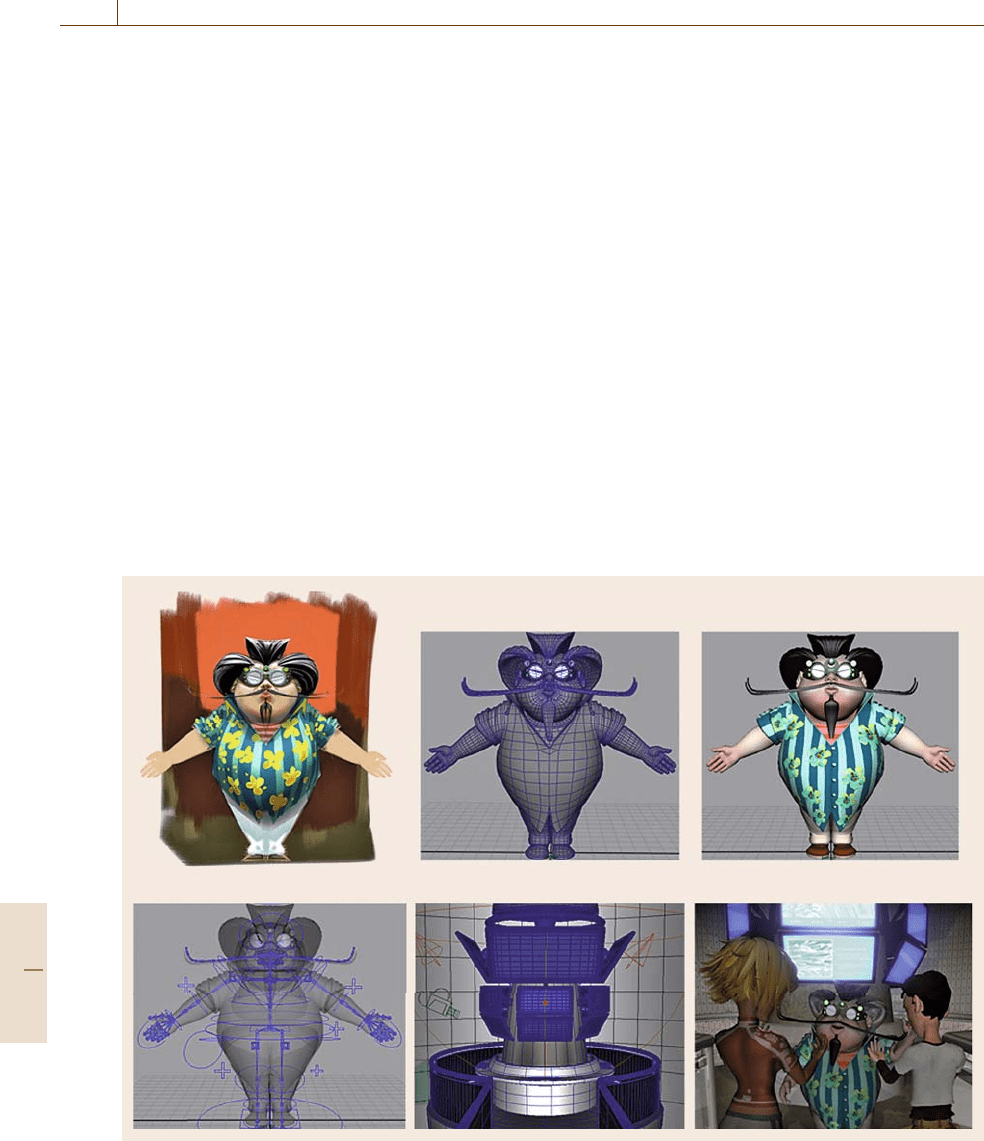
650 Part D Automation Design: Theory and Methods for Integration
other, will have small form factors while patches that
are close to each other and facing each other 100%
will have a form factor close to 1. The form factors are
used as coefficients in a linearized form of the render-
ing equation, which yields a linear system of equations.
Solving this system yields the radiosity, or brightness,
of each patch, taking into account diffuse interreflec-
tions and soft shadows [37.14].
Key activities of the preproduction and production
phases are illustrated in Fig.37.8.
37.6.3 Postproduction
The postproduction phase includes two main activities:
digital compositing and digital output.
Digital Compositing
In general an animated sequence includes images from
multiple sources that are integrated into a single,
seamless whole. Digital compositing is the process
of digitally manipulating and combining at least two
source images to produce an integrated result [37.15];
1. Conceptual design 2. Modeling 3. Texturing
4. Rigging 5. Lighting/camera setup (3-D layout) 6. Animation and final rendering
Fig. 37.8 Image showing key activities of the 3-D animation production process (courtesy of Purdue University and
Educate for Tomorrow, Inc., with permission from N. Adamo-Villani, R. Giasolli)
for example, Fig.37.9 is a composite created from
three different original images: the buildings, roads,
and grass areas are a CG rendering produced from
a three-dimensional model; the trees are also computer
generated 3-D imagery rendered in a different pass as
paint effects strokes; and the sky is a digital photograph
projected onto a 3-D dome and used as a backdrop. In
addition many of the elements in the image had some
additional processing performed on them as they were
added to the scene (for example, color and size adjust-
ments).
Digital Output
Computer animation sequences can be output in the
form of digital files, video or film. Some of the most
popular digital file formats for saving animation se-
quences include: QuickTime, Motion Pictures Expert
Group (MPEG), audio video interleaved (AVI), and
Windows Media. The QuickTime format stores both
video and audio data. It is a cross-platform format
that supports different spatial and temporal resolutions
and provides a variety of compression options. MPEG
Part D 37.6
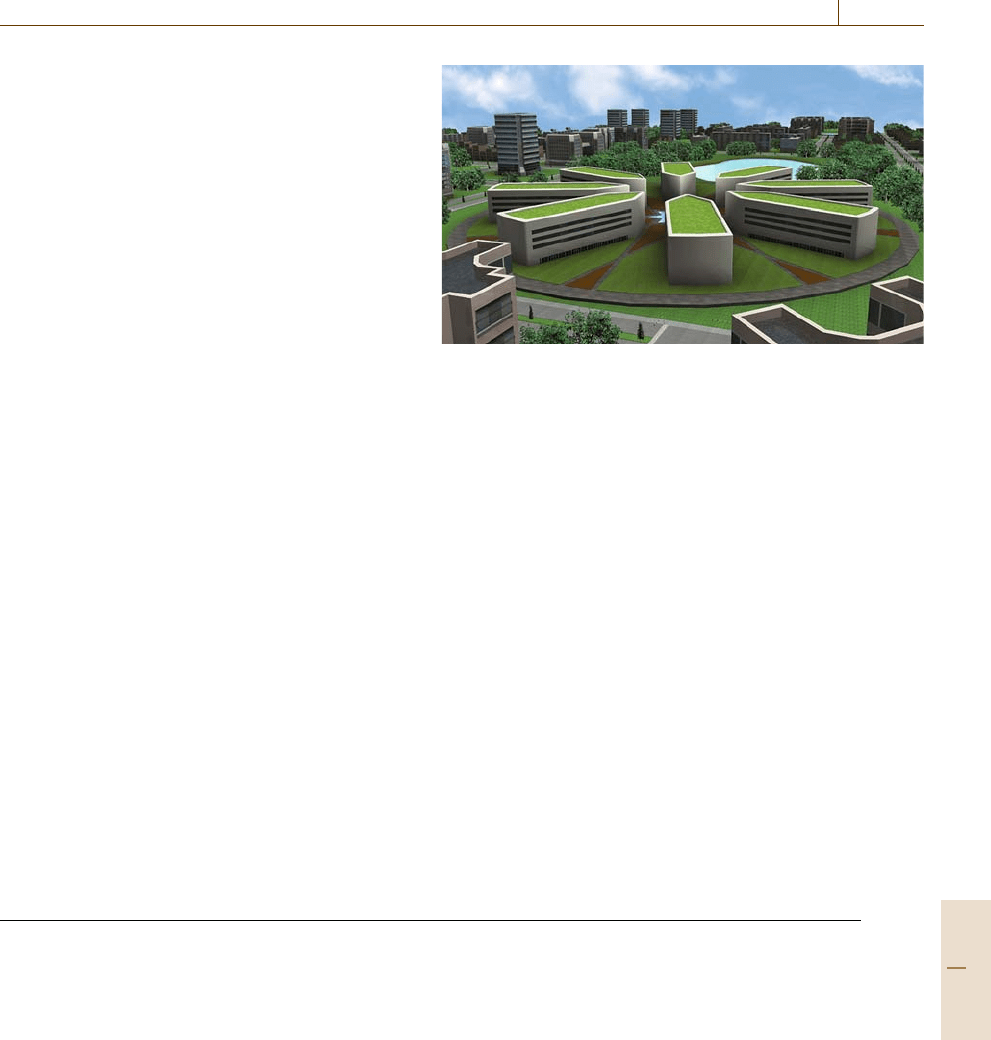
Computer-Aided Design, Computer-Aided Engineering, and Visualization References 651
(developed by the Motion Pictures Expert Group) is
a popular format for compressing animations; the data
compression is based on the removal of data that are
identical or similar not just within the frame, but also
between frames [37.12]. The AV I format (introduced
by Microsoft in 1992) is a generic Windows-only for-
mat for moving images; a more recent version of this
format is Windows Media, which offers more efficient
compression for streaming high-resolution images.
Output on video can be done on a variety of video
formats (both analog and digital). Commonly used dig-
ital formats include high-definition formats such as D6,
HD-D5, HDCAM, DVCPRO and standard-definition
formats suchas D1, Digital Betacam, IMX, DV(NTSC),
D-VHS, and DVD.
Conclusions and Emerging Trends
This chapter provided an overview of computer-aided
design and computer-aided engineering and included
elements of computer graphics, animation, and visual-
ization. Today’s commercial brands of 3-D modeling
tools essentially contain many of the same functions,
irrespective of which software vendor is chosen. CAD
software programs are dimension driven, parametric,
feature based, and constraint based all at the same time,
and these terms have come to be synonymous when de-
scribing modern CAD systems. Computer animations
and simulations are commonly used in the engineering
design process to visualize movement of parts, deter-
mine possible interferences of parts, and to simulate
design analysis attributes such as fluid and thermal dy-
namics. Today most CAD systems 3-D model files can
be converted into a format that can be used as in-
put into popular animation software programs, such as
Maya and 3ds Max. However, in the future it is antic-
ipated that there will be a tighter integration between
CAD and animation programs. CAD vendors will be
Fig. 37.9 An example composite image (courtesy of Purdue Uni-
versity, with permission from N. Adamo-Villani, G. Bertoline and
M. Sozen)
under greater pressure to partner large enterprise soft-
ware companies and become more product life cycle
management (PLM) centric. This will result in CAD
and animation becoming a part of a larger suite of soft-
ware products used in industry. The rapid development
of information technology and computer graphics tech-
nology will impact the hardware platforms and software
development related to CAD and animation. This will
result in even more feature-rich CAD software pro-
grams and capabilities. Faster screen refresh rates of
largeCAD models,the abilityto collaborateat greatdis-
tances in real time, shorter animation rendering times,
and higher-resolution images are a few improvements
that will result from the rapid development of infor-
mation technology and computer graphics technology.
Overall, there is an exciting future for CAD and ani-
mation in the future that will result in many positive
impacts and changes for industries and businesses that
depend on CAD and animation as a part of their day-to-
day business.
References
37.1 E.N. Wiebe: 3-D constraint-based modeling: find-
ing common themes, Eng. Des. Graph. J. 63(3),
15–31 (1999)
37.2 P.J. Hanratty: Parametric/relational solid mod-
eling. In: Handbook of Solid Modeling,ed.
by D.E. Lacourse (McGraw-Hill, New York 1995)
pp. 8.1–8.25
37.3 G.R. Bertoline, E.N. Wiebe: Fundamentals of
Graphic Communications, 5th edn. (McGraw-Hill,
Boston 2006)
37.4 N.W. Hartman: Defining expertise in the use of
constraint-based CAD tools by examining practic-
ing professional, Eng. Des. Graph. J. 69(1), 6–15
(2005)
37.5 N.W. Hartman: The development of expertise in
the use of constraint-based CAD tools: examining
practicing professionals, Eng. Des. Graph. J. 68(2),
14–25 (2004)
37.6 S.K. Bhavnani, B.E. John: Exploring the unrealized
potential of computer-aided drafting, Proc. CHI’96
(1996) pp. 332–339
37.7 S.K. Bhavnani, B.E. John: From sufficient to effi-
cient usage: An analysis of strategic knowledge,
Proc. CHI’97 (1997) pp. 91–98
Part D 37
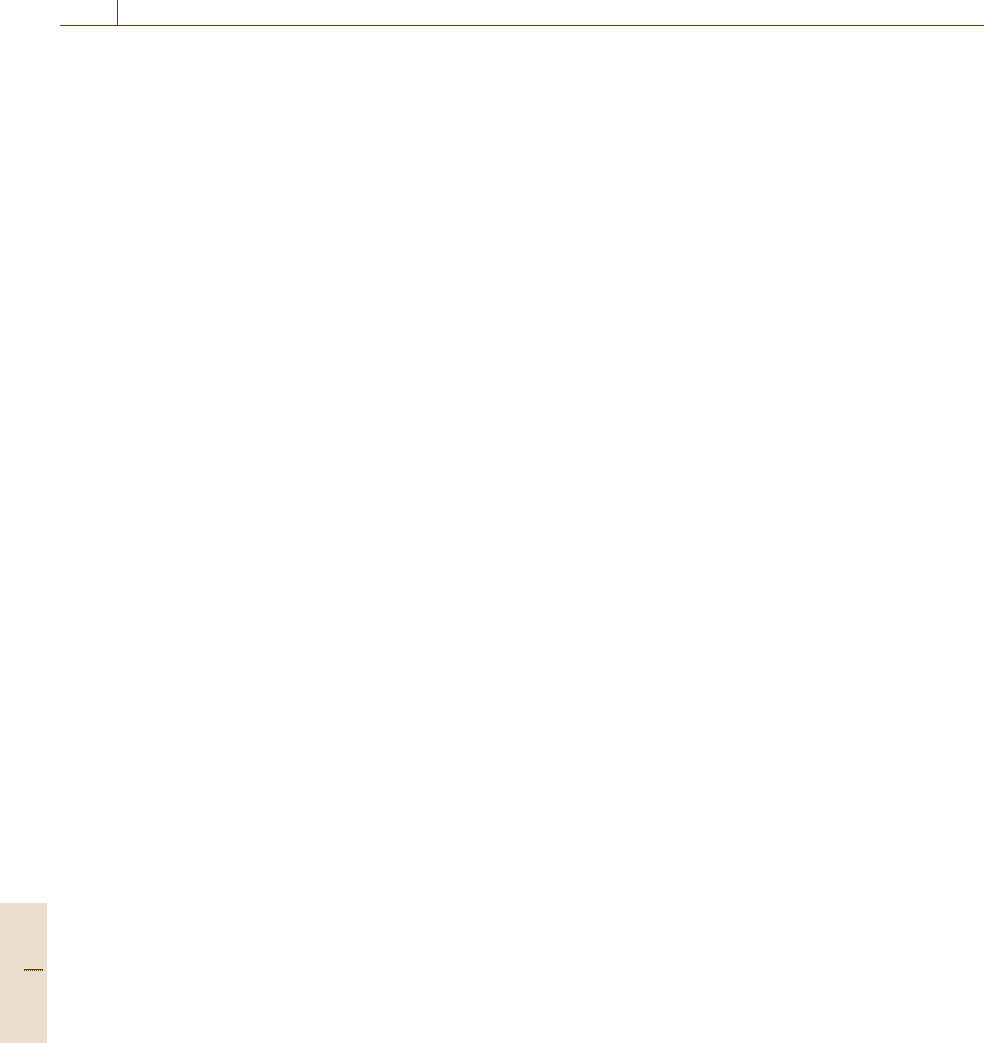
652 Part D Automation Design: Theory and Methods for Integration
37.8 S.K. Bhavnani, B.E. John, U. Flemming: The
strategic use of CAD: An empirically inspired,
theory-based course, Proc. CHI’99 (1999) pp. 183–
190
37.9 M. O’Rourke: Principles of Three-Dimensional Com-
puter Animation, 3rd edn. (Norton, New York 2003)
37.10 J.A. Wright: Animation Writing and Development
(Focal, Oxford 2005)
37.11 C. Winder, Z. Dowlatabadi: Producing Animation
(Focal, Oxford 2001)
37.12 I.V. Kerlow: The Art of 3-D: Computer Animation
and Effects, 2nd edn. (Wiley, Indianapolis 2000)
37.13 S. Dyer, J. Martin, J. Zulauf: Motion capture white
paper (1995)
37.14 C. Goral, K.E. Torrance, D.P. Greenberg, B. Bat-
taile: Modeling the interaction of light between
diffuse surfaces, Comput. Graph. 18(3), 213–222
(1984)
37.15 R. Brinkmann: The Art and Science of Digital Com-
positing (Morgan Kaufmann, Sand Diego 1999 )
Part D 37

653
Design Autom
38. Design Automation for Microelectronics
Deming Chen
Design automation or computer-aided design
(CAD) for microelectronic circuits has emerged
since the creation of integrated circuits (IC). It
has played a crucial role to enable the rapid
development of hardware and software systems
in the past several decades. CAD techniques are
the key driving forces behind the reduction of
circuit design time and the optimization of circuit
quality. Meanwhile, the exponential growth of
circuit capacity driven by Moore’s law prompts new
and critical challenges for CAD techniques. Moore’s
law describes an important trend in the history of
the semiconductor industry: that the number of
transistors per unit chip area would be doubled
approximately every 2 years. This observation was
first made by Intel co-founder Gordon E. Moore in
a paper in 1965. Moore’s law has held true for the
past four decades, and many people believe that it
will continue to apply for at least another decade
before reaching the fundamental physical limits of
device fabrication.
In this chapter we will introduce the funda-
mentals of design automation as an engineering
field. We begin with several important processor
38.1 Overview.............................................. 653
38.1.1 Background
on Microelectronic Circuits............. 653
38.1.2 History
of Electronic Design Automation .... 656
38.2 Techniques
of Electronic Design Automation ............ 657
38.2.1 System-Level Design..................... 657
38.2.2 Typical Design Flow ...................... 658
38.2.3 Verification and Testing ................ 662
38.2.4Technology CAD ............................ 663
38.2.5Design for Low Power ................... 664
38.3 New Trends and Conclusion ................... 665
References .................................................. 667
technologies and several existing IC technologies.
We then present a typical CAD flow covering all
the major steps in the design cycle. We also
cover some important topics such as verification
and technology computer-aided design (TCAD).
Finally, we introduce some new trends in design
automation.
38.1 Overview
Microelectronic circuits are ubiquitous nowadays. We
can find them not only in desktop computers, lap-
tops, and workstations,butalso inconsumer electronics,
home and office appliances, automobiles, military ap-
plications, telecommunication applications, etc. Due
to different requirements of these applications, cir-
cuits are designed differently to pursue unique fea-
tures suitable for the specific application. In general,
these devices are built with two fundamental and or-
thogonal technologies: processor technology and IC
technology.
38.1.1 Background
on Microelectronic Circuits
Processor technology refers to the architecture of the
computation engine used to implement the desired
functionality of an electronic circuit. It is categorized
into three main branches: general-purpose proces-
sors,application-specific instruction setprocessors,and
single-purpose processors [38.1]. A general-purpose
processor, or microprocessor, is a device that executes
software through instruction codes. Therefore, they are
Part D 38
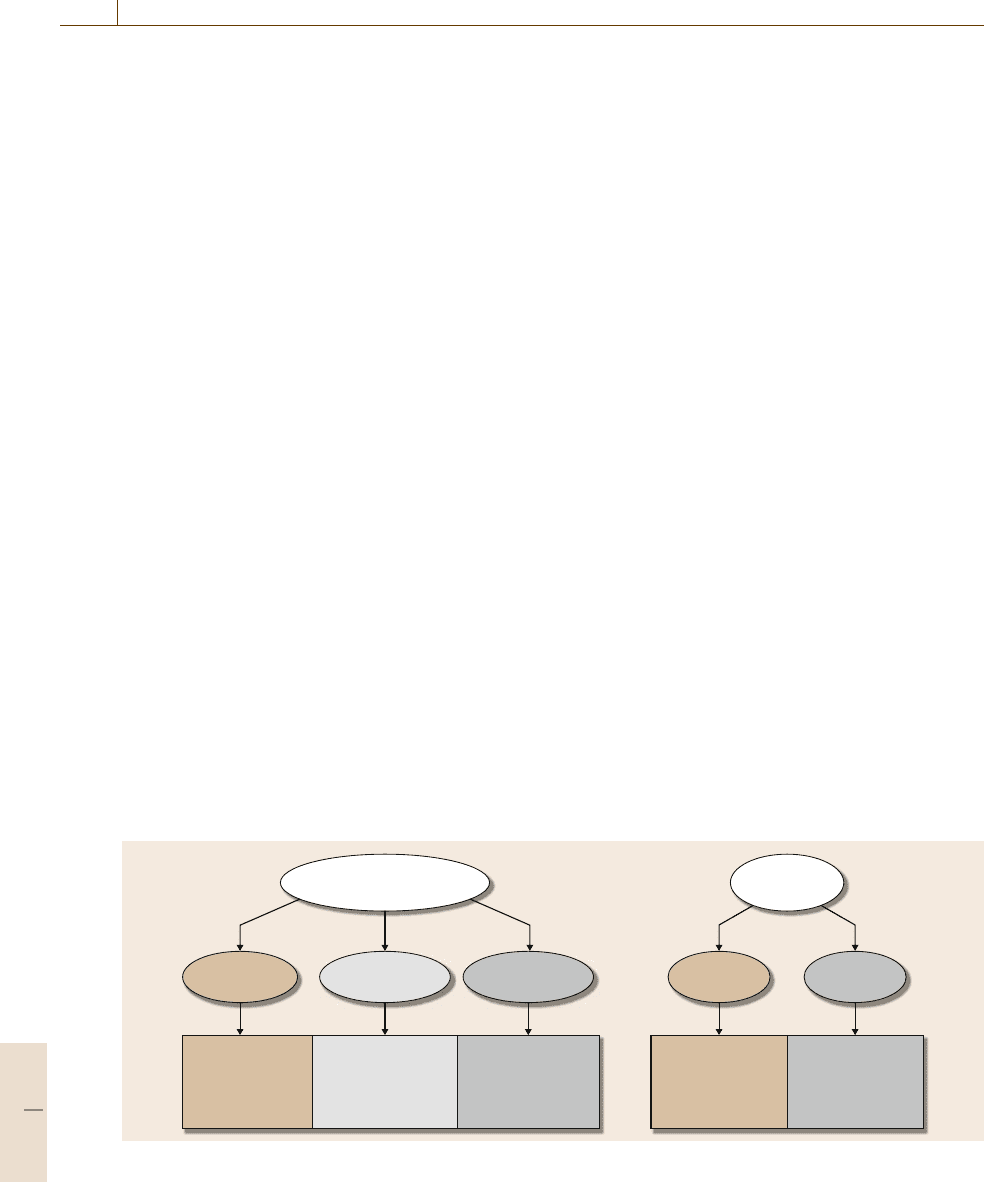
654 Part D Automation Design: Theory and Methods for Integration
software-programmable. This processor has a program
memory that holds the instructions and a general data-
path that executes the instructions. The general datapath
consists of one or several general-purpose arithmetic
logic units (ALUs). An application-specific instruction
set processor (ASIP) is a software-programmable pro-
cessor optimized for a particular class or domain of
applications, such as signal processing, telecommuni-
cation, or gaming applications. To fit the application,
the datapath and instructions of such a processor are
customized; for example, one type of ASIP, the digital
signal processor (DSP), may have special-purpose data-
path components such as a multiply–accumulate unit,
which can perform multiply-and-add operations using
only one instruction. Finally, a single-purpose proces-
sor is a digital circuit designed to serve a single purpose
– executing exactly one program. It represents an exact
fit of the desired functionality and is not software-
programmable. Its datapath contains only the essential
components for this program and there is no program
memory. A general-purpose processor offers maximum
flexibility in terms of the variety of applications it can
support but with the least efficiency in terms of per-
formance and power consumption. On the contrary,
single-purpose processors offer the maximum perfor-
mance and power efficiency but with the least flexibility
in terms of the applications they can support. The ASIP
offers a compromise between these two extremes.
IC technology refers to the specific implementation
method or the design style of the processing engine
on an IC. It is categorized into three main branches:
full custom, semicustom,andprogrammable logic de-
vice (PLD) [38.2]. Full custom refers to the design style
where the functional and physical designs are hand-
Semicustom/ASIC
Array-based
Gate arrays
Sea of gates
Structured ASICs
Cell-based
Standard cell
a) b)
Platform-based
System-on-a-chip
IP-based
PLD
CPLD
EPROM-based
EEPROM-based
Flash-based
FPGA
SRAM-based
Anti-fuse-based
Flash-based
Fig. 38.1a,b Classification of (a) semicustom design and (b) PLD design (SRAM: static random access memory;
EPROM: erasable programmable read-only memory; EEPROM: electrically erasable programmable read-only memory)
crafted. This would provide the best design quality but
also requires the extensive effort of a design team to
optimize each detailed feature of the circuit. Since the
design effort and cost are high, this design style is
usually used in high-volume (thus cost can be amor-
tized) or high-performance applications. Semicustom
design is also called application-specific integrated cir-
cuit (ASIC). It tries to reduce the design complexity by
restricting the circuit primitives to a limited number.
Such a restriction allows the designer to use well-
designed circuit primitives (gates or functional blocks)
and focus on their efficient interconnection. Such a re-
striction also makes it easier to develop computer-aided
design tools for circuit design and optimization and re-
duce the design time and cost. Today the number of
semicustom designs outnumbers custom designs sig-
nificantly, and some high-performance microprocessors
have been designed partially using semicustom style,
especially for the control logic (e.g., IBM’s POWER-
series processors and SUN Microsystems’ UltraSPARC
T1 processors).
Semicustom designs can be further partitioned into
several major classes. Figure 38.1a shows such a par-
tition. Cell-based design generally refers to standard
cell design, where the fundamental cells are stored in
a library. Cells often are simple gates and latches, but
can be complex gates, memories, and logic blocks as
well. These cells are pretested and precharacterized.
The maintenance of the library is not a trivial task
since each cell needs to be characterized in terms of
area, delay, and power over ranges of temperatures
and supply voltages [38.2]. Companies offer standard
cell libraries for use with their fabrication and design
technologies, and amortize the effort of designing the
Part D 38.1
